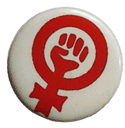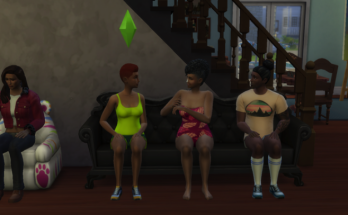By Charlotte Pradié
LittleMonsters.com is not a feminist of color site. The site perpetuates the valuing of whiteness and thinness of bodies. There is an absence of non-white race on the site. There is very little discussion of race. If the site has feminist features, it is of the post-feminist variety. Many users regularly engage in positive discourse around the ideas of body positivity, acceptance, and freedom (especially in regard to sexuality and sometimes gender) by celebrating the Body Revolution 2013 and encouraging people to love themselves no matter what. Users post pictures of themselves without many clothes on, and when prompted to articulate why they post, they reference a “take it or leave it” attitude. Users believe that posting the images is a liberating and empowering act. These values do align with certain values of feminism, but it is the action and vocabulary that renders this discourse problematic. Users use the word “beautiful” and “perfect” to describe the majority of the images of bodies that are uploaded to the site. Perhaps these terms are being used to redefine notions of attractiveness. In another sense, this terminology reinforces the value of the physical body in contemporary society and encourages users to continue to upload “selfies” (often with very little clothing on) with the hope of getting the same positive reinforcement. If we situate feminism in terms of a vision of a future that does not rely on appearance as social capital, LittleMonsters.com does not promote feminism. Instead, it innoculates certain feminist values and critiques into mainstream dialog, and furthermore commodifies them by connecting the Body Revolution to the ticket sales page.
Emily Ann’s site helped me to understand mine, because I think that my space is more tolerant and idealist. The language that people used on her site was much more offensive than on my site. Even though LittleMonsters.com perpetuates problematic ideologies, it is such a large community of young people who would be very negatively affected by the language on Emily Ann’s site, though this is not to say that Little Monsters is benign by any stretch. Little Monsters also has the potential to be the mode through which users create positive relationships with other users in a way that Emily Ann’s site is not (because it is anonymous).
I articulated my views about the Body Revolution using vocabulary that was probably inaccessible to many users. I asked a series of questions (Do you think that Gaga is a feminist? Is it empowering to post pictures of yourself not wearing a lot of clothes? Why does empowerment involve putting the body on display on this website? Why did Gaga decide to take pictures of her body in response to accusations of her gaining weight?). Then I expressed ambiguity about the effectiveness of the Body Revolution. Even though it was probably an overload of academic vocabulary, it still garnered some critical attention from the Monster community, so I think this was a somewhat effective way of stating my ideas in the space.
In terms of race, I posted an image of a quote from the Manifesto of Mother Monster (“And thus began the beginning of the new race: a race within the race of humanity, a race which bears no prejudice, no judgment, but boundless freedom”). This did not elicit any dialog. I might have to be more overt in my addressing race to have someone respond, though perhaps my post would go unanswered.
I want to better understand the phenomenology of posting a picture and the attention that comes with it. I want to understand if users perceive that this act really does contribute to a person’s (long-term) confidence. I also want to know how much time users spend on the site on average.

